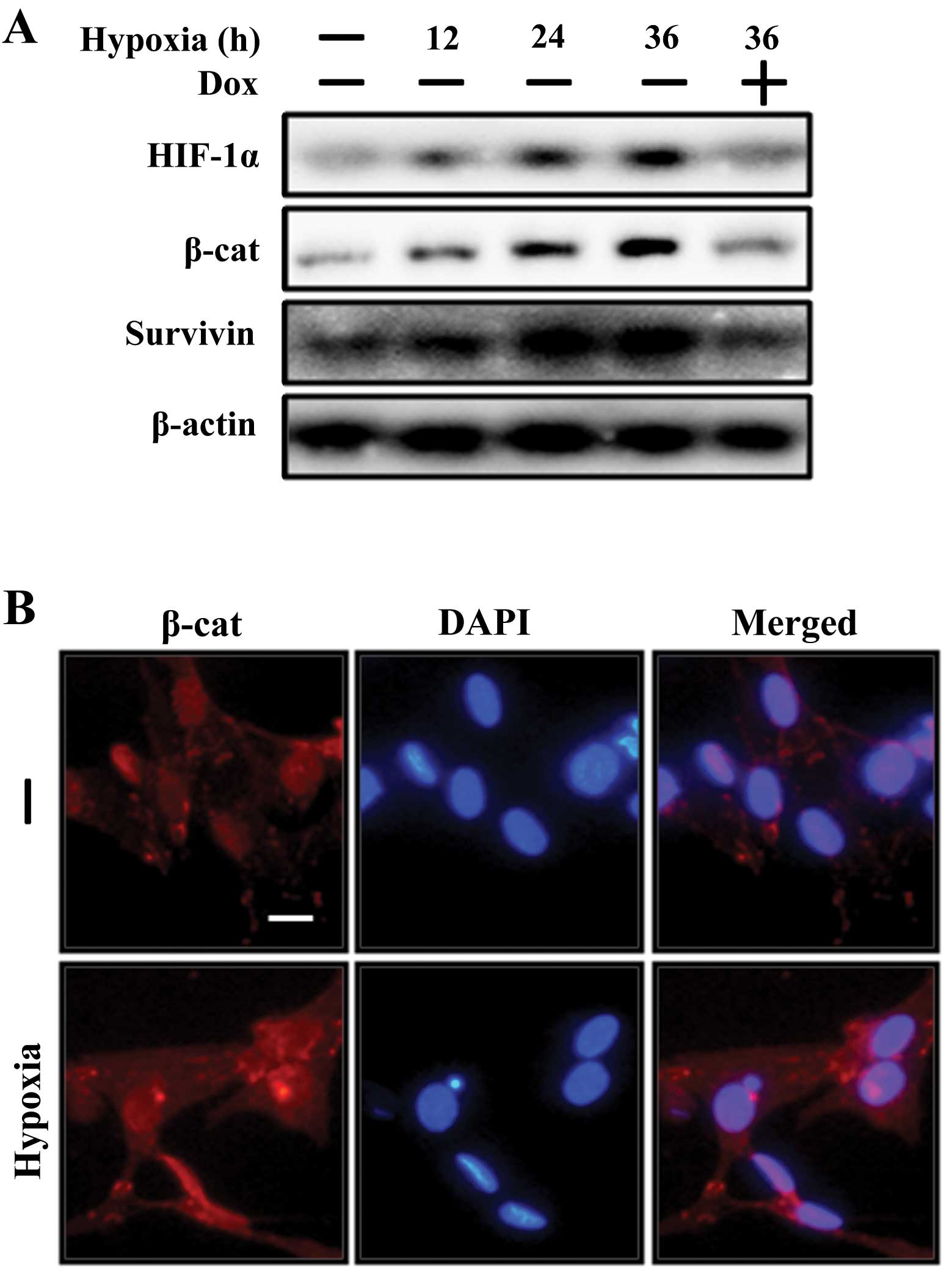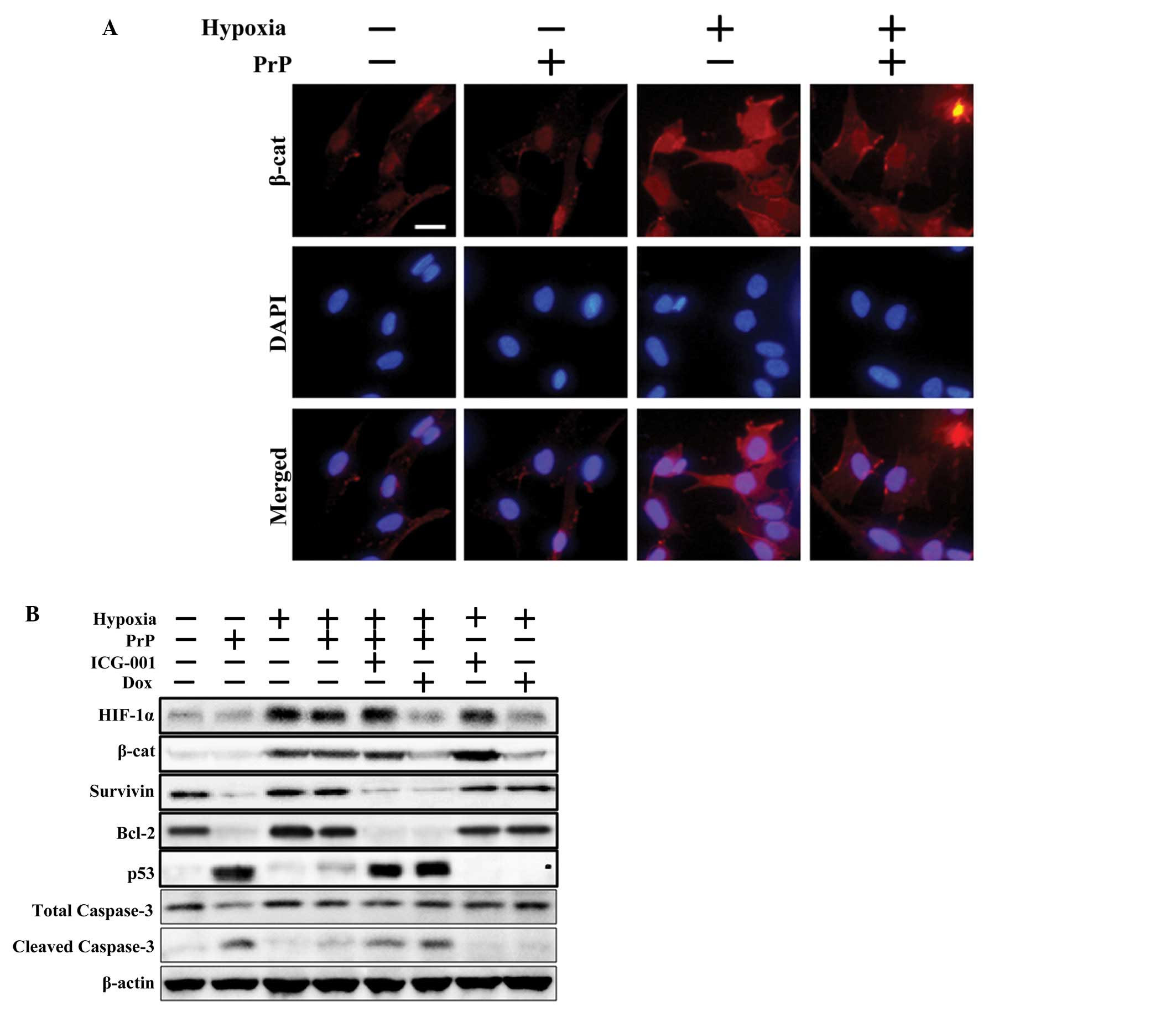|
1
|
Prusiner SB: Prions. Proc Natl Acad Sci
USA. 95:13363–13383. 1998. View Article : Google Scholar : PubMed/NCBI
|
|
2
|
Wickner RB: Prion diseases: Infectivity
versus toxicity. Nature. 470:470–471. 2011. View Article : Google Scholar : PubMed/NCBI
|
|
3
|
Eghiaian F, Grosclaude J, Lesceu S, et al:
Insight into the PrPC→PrPSc conversion from the structures of
antibody-bound ovine prion scrapie-susceptibility variants. Proc
Natl Acad Sci USA. 101:10254–10259. 2004.
|
|
4
|
Turnbaugh JA, Unterberger U, Saá P, et al:
The N-terminal, polybasic region of PrP(C) dictates the efficiency
of prion propagation by binding to PrP(Sc). J Neurosci.
32:8817–8830. 2012. View Article : Google Scholar : PubMed/NCBI
|
|
5
|
Sim VL and Caughey B: Ultrastructures and
strain comparison of under-glycosylated scrapie prion fibrils.
Neurobiol Aging. 30:2031–2042. 2009. View Article : Google Scholar : PubMed/NCBI
|
|
6
|
Jeong JK, Moon MH, Bae BC, et al:
Autophagy induced by resveratrol prevents human prion
protein-mediated neurotoxicity. Neurosci Res. 73:99–105. 2012.
View Article : Google Scholar : PubMed/NCBI
|
|
7
|
Jeong JK, Moon MH, Lee YJ, Seol JW and
Park SY: Autophagy induced by the class III histone deacetylase
Sirt1 prevents prion peptide neurotoxicity. Neurobiol Aging.
34:146–156. 2013. View Article : Google Scholar : PubMed/NCBI
|
|
8
|
Aiken JM, Williamson JL and Marsh RF:
Evidence of mitochondrial involvement in scrapie infection. J
Virol. 63:1686–1694. 1989.PubMed/NCBI
|
|
9
|
Quintanilla RA, Dolan PJ, Jin YN and
Johnson GV: Truncated tau and Aβ cooperatively impair mitochondria
in primary neurons. Neurobiol Aging. 33:619.e25–35. 2012.
|
|
10
|
Freixes M, Rodriguez A, Dalfo E and Ferrer
I: Oxidation, glycoxidation, lipoxidation, nitration, and responses
to oxidative stress in the cerebral cortex in Creutzfeldt-Jakob
disease. Neurobiol Aging. 27:1807–1815. 2006. View Article : Google Scholar : PubMed/NCBI
|
|
11
|
Jeong JK, Moon MH, Park YG, et al:
Gingerol-induced hypoxia-inducible factor 1 alpha inhibits human
prion peptide-mediated neurotoxicity. Phytother Res. 27:1185–1192.
2013. View
Article : Google Scholar : PubMed/NCBI
|
|
12
|
Xie L, Johnson RS and Freeman RS:
Inhibition of NGF deprivation-induced death by low oxygen involves
suppression of BIMEL and activation of HIF-1. J Cell Biol.
168:911–920. 2005. View Article : Google Scholar : PubMed/NCBI
|
|
13
|
Strey CW, Gestrich J, Beckhaus T, et al:
Hypoxia and reoxygenation of primary human hepatocytes induce
proteome changes of glucose metabolism, oxidative protection and
peroxisomal function. Int J Mol Med. 26:577–584. 2010. View Article : Google Scholar
|
|
14
|
Selvendiran K, Bratasz A, Kuppusamy ML,
Tazi MF, Rivera BK and Kuppusamy P: Hypoxia induces chemoresistance
in ovarian cancer cells by activation of signal transducer and
activator of transcription 3. Int J Cancer. 125:2198–2204. 2009.
View Article : Google Scholar : PubMed/NCBI
|
|
15
|
Gardner LB and Corn PG: Hypoxic regulation
of mRNA expression. Cell Cycle. 7:1916–1924. 2008. View Article : Google Scholar
|
|
16
|
Malik A, Korol A, Weber M, Hankeln T,
Avivi A and Band M: Transcriptome analysis of the spalax hypoxia
survival response includes suppression of apoptosis and tight
control of angiogenesis. BMC Genomics. 13:6152012. View Article : Google Scholar
|
|
17
|
Ryan HE, Lo J and Johnson RS: HIF-1 alpha
is required for solid tumor formation and embryonic
vascularization. EMBO J. 17:3005–3015. 1998. View Article : Google Scholar : PubMed/NCBI
|
|
18
|
Lee SH, Koo KH, Park JW, et al: HIF-1 is
induced via EGFR activation and mediates resistance to anoikis-like
cell death under lipid rafts/caveolae-disrupting stress.
Carcinogenesis. 30:1997–2004. 2009. View Article : Google Scholar : PubMed/NCBI
|
|
19
|
Adams JM, Difazio LT, Rolandelli RH, et
al: HIF-1: a key mediator in hypoxia. Acta Physiol Hung. 96:19–28.
2009. View Article : Google Scholar : PubMed/NCBI
|
|
20
|
Koh MY, Spivak-Kroizman TR and Powis G:
HIF-1alpha and cancer therapy. Recent Results Cancer Res.
180:15–34. 2010. View Article : Google Scholar : PubMed/NCBI
|
|
21
|
Ke Q and Costa M: Hypoxia-inducible
factor-1 (HIF-1). Mol Pharmacol. 70:1469–1480. 2006. View Article : Google Scholar : PubMed/NCBI
|
|
22
|
Jeong JK, Seo JS, Moon MH, Lee YJ, Seol JW
and Park SY: Hypoxia-inducible factor-1α regulates prion protein
expression to protect against neuron cell damage. Neurobiol Aging.
33:1006.e1–10. 2012.
|
|
23
|
Singh N, Sharma G and Mishra V: Hypoxia
inducible factor-1: its potential role in cerebral ischemia. Cell
Mol Neurobiol. 32:491–507. 2012. View Article : Google Scholar : PubMed/NCBI
|
|
24
|
Seo JS, Seol JW, Moon MH, Jeong JK, Lee YJ
and Park SY: Hypoxia protects neuronal cells from human prion
protein fragment-induced apoptosis. J Neurochem. 112:715–722. 2010.
View Article : Google Scholar : PubMed/NCBI
|
|
25
|
Zhang Q, Qian Z, Pan L, Li H and Zhu H:
Hypoxia-inducible factor 1 mediates the anti-apoptosis of berberine
in neurons during hypoxia/ischemia. Acta Physiol Hung. 99:311–323.
2012. View Article : Google Scholar : PubMed/NCBI
|
|
26
|
Cunningham LA, Candelario K and Li L:
Roles for HIF-1α in neural stem cell function and the regenerative
response to stroke. Behav Brain Res. 227:410–417. 2012.
|
|
27
|
Lehwald N, Tao GZ, Jang KY, et al:
β-Catenin regulates hepatic mitochondrial function and energy
balance in mice. Gastroenterology. 143:754–764. 2012.
|
|
28
|
Flaherty MP, Kamerzell TJ and Dawn B: Wnt
signaling and cardiac differentiation. Prog Mol Biol Transl Sci.
111:153–174. 2012. View Article : Google Scholar
|
|
29
|
Wiedau-Pazos M, Wong E, Solomon E, Alarcon
M and Geschwind DH: Wnt-pathway activation during the early stage
of neurodegeneration in FTDP-17 mice. Neurobiol Aging. 30:14–21.
2009. View Article : Google Scholar : PubMed/NCBI
|
|
30
|
Meyers J, Hu L, Moses A, Kaboli K,
Papandrea A and Raymond P: β-catenin/Wnt signaling controls
progenitor fate in the developing and regenerating zebrafish
retina. Neural Dev. 7:302012.
|
|
31
|
Mazumdar J, O’Brien WT, Johnson RS, et al:
O2 regulates stem cells through Wnt/β-catenin
signalling. Nat Cell Biol. 12:1007–1013. 2010.
|
|
32
|
Wei L, Sun C, Lei M, et al: Activation of
Wnt/β-catenin pathway by exogenous Wnt1 protects SH-SY5Y cells
against 6-hydroxydopamine toxicity. J Mol Neurosci. 49:105–115.
2013.
|
|
33
|
Liu S, Yeh TH, Singh VP, et al: β-Catenin
is essential for ethanol metabolism and protection against
alcohol-mediated liver steatosis in mice. Hepatology. 55:931–940.
2012.
|
|
34
|
Mitani T, Harada N, Nakano Y, Inui H and
Yamaji R: Coordinated action of hypoxia-inducible factor-1α and
β-catenin in androgen receptor signaling. J Biol Chem.
287:33594–33606. 2012.
|
|
35
|
Jeong JK, Moon MH, Seo JS, Seol JW, Park
SY and Lee YJ: Hypoxia inducing factor-1alpha regulates tumor
necrosis factor-related apoptosis-inducing ligand sensitivity in
tumor cells exposed to hypoxia. Biochem Biophys Res Commun.
399:379–383. 2010. View Article : Google Scholar
|
|
36
|
L’Episcopo F, Tirolo C, Testa N, et al:
Plasticity of subventricular zone neuroprogenitors in MPTP
(1-methyl-4-phenyl-1,2,3,6-tetrahydropyridine) mouse model of
Parkinson’s disease involves cross talk between inflammatory and
Wnt/β-catenin signaling pathways: functional consequences for
neuroprotection and repair. J Neurosci. 32:2062–2085.
2012.PubMed/NCBI
|
|
37
|
Liang J, Liu L and Xing D:
Photobiomodulation by low-power laser irradiation attenuates
Aβ-induced cell apoptosis through the Akt/GSK3β/β-catenin pathway.
Free Radic Biol Med. 53:1459–1467. 2012.
|
|
38
|
Hota KB, Hota SK, Srivastava RB and Singh
SB: Neuroglobin regulates hypoxic response of neuronal cells
through Hif-1α- and Nrf2-mediated mechanism. J Cereb Blood Flow
Metab. 32:1046–1060. 2012.PubMed/NCBI
|













